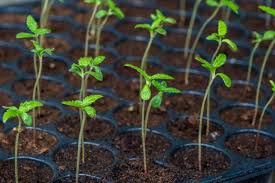
Addressing Tall and Skinny Cannabis Plant Growth: Troubleshooting Guide:
Cultivating cannabis plants can be a rewarding experience, but it’s not without its challenges. One common issue that growers may encounter is tall and skinny plant growth. This phenomenon, known as stretching, can lead to weak stems, reduced yields, and overall suboptimal plant development. In this troubleshooting guide, we will explore the causes of tall and skinny cannabis plants and provide practical solutions to address this issue effectively.
Causes of Tall and Skinny Cannabis Plants
- Insufficient Light Intensity
Insufficient light intensity is a common cause of stretching in cannabis plants. When plants receive inadequate light, they stretch in an attempt to reach for more light. This can result in elongated stems and weak plant structure.
Solution: Ensure your plants are receiving the appropriate amount of light. Opt for high-intensity grow lights or adjust the positioning of your lights to provide optimal coverage. Maintaining the recommended distance between the plants and the light source will help prevent stretching.
- Improper Light Spectrum
The light spectrum plays a crucial role in plant growth and development. An imbalanced light spectrum, such as too much blue light or not enough red light, can contribute to tall and lanky plant growth.
Solution: Use grow lights with a balanced spectrum that includes both blue and red wavelengths. LED grow lights are highly customizable and allow you to adjust the light spectrum to suit different growth stages. Consult the manufacturer’s guidelines or seek expert advice to ensure you’re providing the optimal light spectrum for your plants.
- Inadequate Air Circulation
Poor air circulation within the grow space can lead to stagnant air pockets around the plants. This lack of airflow can result in tall and weak stems as the plants struggle to strengthen themselves against the absence of natural wind.
Solution: Install circulating fans to promote air movement within the grow space. This will help strengthen the stems and encourage more robust plant development. Position the fans strategically to avoid direct airflow onto the plants, which could cause drying out or damage.
- Overcrowding and High Plant Density
Crowded growing conditions, where plants are placed too close together, can contribute to tall and skinny growth. When plants compete for light and space, they stretch upwards in search of more resources.
Solution: Provide adequate spacing between plants to ensure each plant has enough room to grow and receive sufficient light. This will help prevent overcrowding and reduce the likelihood of stretching. Prune or remove excess vegetation if necessary to improve airflow and create a more open canopy.
- Genetics
Some cannabis strains naturally exhibit taller and skinnier growth characteristics due to their genetics. If you’re experiencing consistent tall and skinny growth across different strains, genetics could be a contributing factor.
Solution: Consider selecting cannabis strains known for their more compact and bushy growth patterns. Research different strains and their growth characteristics to find ones that are better suited to your desired plant structure.
Conclusion
Addressing tall and skinny cannabis plant growth requires a multi-faceted approach. By addressing factors such as light intensity, light spectrum, air circulation, plant density, and genetics, you can help prevent and correct stretching issues. Remember to provide optimal lighting conditions, promote proper airflow, maintain appropriate plant spacing, and choose strains with desired growth characteristics.
Regular monitoring and adjustments throughout the growth cycle are crucial to ensuring healthy plant development. By implementing the solutions outlined in this troubleshooting guide, you’ll be on your way to cultivating robust and well-structured cannabis plants.
Please note that the information provided in this guide is for educational purposes only and should not substitute professional advice. Always consult with experienced growers or horticulturists for personalized recommendations and assistance.

